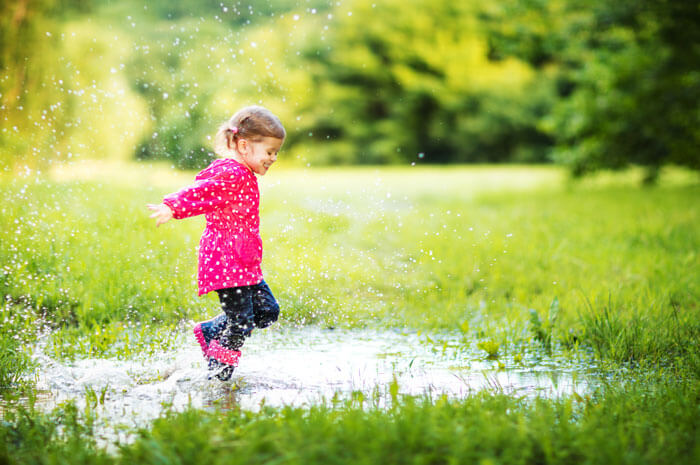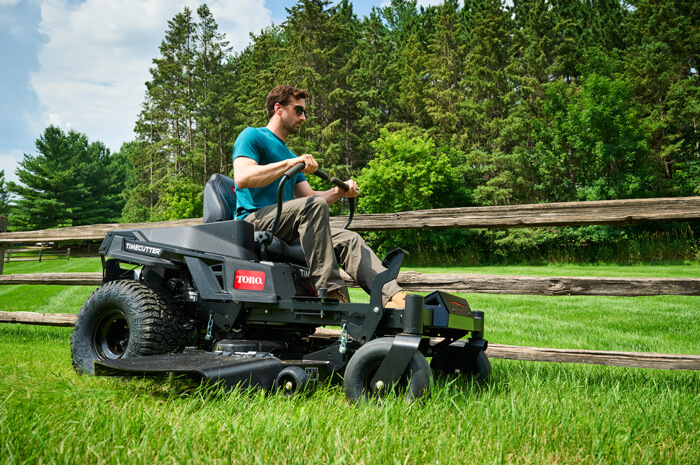
Anyone who’s tried to tackle lawn care in a blustery, wet spring knows that nothing can create lawn and mowing problems like heavy rain. Standing water, mud, and long, damp grasses provide less-than-ideal conditions for pulling out the mower.
Although heavy rains are necessary for an equally heavy growth cycle, it can lead to a lot of questions about overall lawn care. Most commonly, how long do you wait after raining to mow and can you mow in the rain?
What You Need to Think About Before Mowing After (or During) the Rain
Although you’ll need to take a little more care than usual when tending your lawn, here are three steps you can take to improve the appearance of your lawn and even make the most of the rain cycle!
How Long To Wait After Rain to Mow?
Ideally, you should wait until your lawn has dried out before you mow. This doesn’t mean it has to be bone dry and all moisture is gone. It simply means that if you can see water on the lawn or on the grass blades, you may want to wait until it’s absorbed before you mow.
Use the Highest Blade Setting
Regardless of how wet the grass is, set the blades to the highest setting. This will help you avoid clogging your machine and keep your mower in good repair. This may mean that you’ll have to mow more often than you’re used to. However, your lawn—and your lawn mower—will thank you for it.
Avoid Foot Traffic on Lawn
A lawn that has been waterlogged or is showing signs of flooding is a lawn you want to walk on as little as possible. Not only can it lead to accidents, but too much foot traffic could tamp the blades down and draw the mud up. These are two things that are likely to make the lawn worse rather than better after a heavy spring rain. After a heavy rain, it’s best to limit the amount of foot traffic and use a walk-behind mower or zero-turn mower that allows you to get the job done more efficiently.
Can You Mow Your Lawn in The Rain?
The short answer is no. Mowing your lawn in the rain not only can lead to slippery grass and accidents, it interrupts your lawn’s overall growth cycle. However, when your lawn is dry and ready to mow, here are a few hazards to be aware of when performing lawn maintenance after heavy spring rains.
- Damage to the Lawn. Anytime there’s standing water on a lawn, bringing out the mower might damage the lawn. This is especially true if there was flooding. In which case you’ll need to deal with silt deposits and other damage to the grass. Mowing at this time will only further damage your lawn.
- Clean Cut is More Difficult. Wet grass tends to be heavier than usual and may even bend over. This can make a clean cut difficult even with the best equipment. At the same time, the clippings that result from mowing are likely to be just as damp as everything else. It can clump, get stuck in the mower blades, and cause unsightly deposits all over the lawn. This may mean you’ll need to rake the clumps. And clean out your equipment in addition to your regular mow cycle, too! Overall, mowing too quickly after a heavy rain is not only bad for your lawn, but a headache for you!
- Lawn Ruts and Mud Tracks. Excessive moisture can also soften the underlying dirt of your lawn, which may sink when you—and your mower—pass over it. This can cause ruts and mud tracks, which often have to later be reseeded. This can make your ordinarily well-tended lawn look ragged until the growth returns – which can take up to a season!
So, What Now?
Although heavy spring rains bring about all the things we love about spring – the greenery, the flowers, even the bees and butterflies – it’s important to know how to keep your lawn looking its best. For more information and tips to keep your outdoor space looking beautiful this spring, check out our other articles and tools – all approved by our lawn care experts at Toro!



